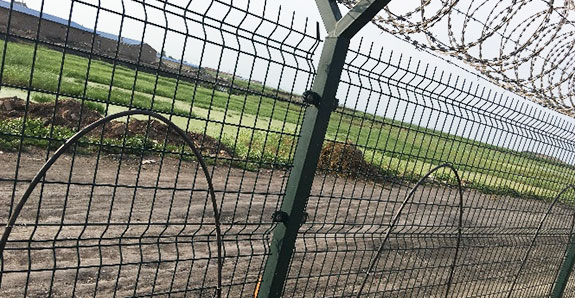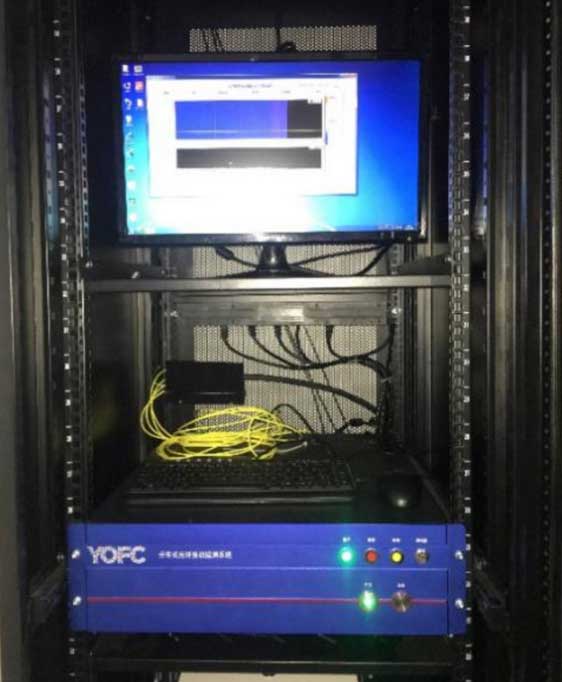In response to the promotion of informatization and smartness of airports, this airport established an intelligent security monitoring system, addressing the low efficiency of human surveillance and difficulties associated with 24-hour monitoring across all locations. With a perimeter of about 9 km, one side of the airport is close to a road, making early warnings of intrusion by passing vehicles impossible, and resulting in frequent damage to the fence. Farmed fields on several sides also pose security risks in terms of intrusion by cattle, sheep or humans.

The specific user requirements for intelligent security at the airport are as follows:
- 24-hour, 100% coverage real-time monitoring within the airport perimeter. The video monitoring system must permit intrusion localization, and support picture-in-picture visualization for 24/7 monitoring and timely handing of security issues by operators from the duty room;
- For the side of the airport close to the road, alarms must be triggered by vehicles approaching the fence, providing early warning of breach and allowing operators on duty to locate the vehicles responsible and respond to potential collisions in a timely manner;
- Shield from and filter out interference caused by takeoff of aircraft and movement of vehicles within the fence, minimizing false alarms;
- Resist interference due to windy weather, facilitating intrusion monitoring in the windy airport environment;
- Easy operation and maintenance. Fusing of damaged optical fibres where possible. Expansion capacity for later integration with other systems or platforms.
Based on these client requirements, YOFC conducted an on-site survey during the project's early stages, and determined that a distributed optical fibre vibration sensor system + video monitoring system scheme would be appropriate. A detailed plan for deployment of protection zones, optical fibre configuration, equipment installation locations and on-site power supply settings was also drawn up. The overall layout was as follows:

-
U-shaped optical cable structure in protection zones:Optical cables were allocated to protection zones according the length, and laid in U-shapes with 1:2.25 length-to-width ratios. This layout improves the system's location accuracy and sensitivity, ensuring good vibration sensitivity at all points on the perimeter. Redundant optical cables were also positioned within each protection zone to facilitate their use for repair of any later cable damage.

-
Video alarm linkage:After laying optical cables on site, protection zones were marked out and equipment installed and debugged. Cable lengths were commensurate with the physical length of the zones in which they were located. The system permits highly flexible configuration in software of variable vibration alarm thresholds within protection zones, dependent on the vibration sensitivity of the optical cables at different positions. The settings for protection zones can be modified later if there is any change in cable length, alternatively the vibration alarm thresholds can be reconfigured. Alarm rule parameters,including vibration duration and spatial range can also be adjusted. When the equipment was installed in the monitoring room, about 400m of communication cable linked it to the starting point of the protection zones. Monitoring room equipment includes a distributed vibration detection host—used for vibration signal processing, analysis and alarm information storage—and two 48-channel relay linkage modules for converting vibration alarm signals into switch signals, for output to video alarm hosts for video linkage.

-
Interference shielding:Environmental and vibration data collection revealed the presence of strong winds, and vibration from operation of excavating equipment and passing vehicles. However, after pattern recognition the final system is effectively shielded from wind signals of force 5 and below.
This project permits 24/7 security monitoring of all areas within the airport perimeter from the duty room, with intelligent intrusion, automatic fibre break, and sound-light alarm functionality, allowing operators on duty to engage in active monitoring only in response to alarm signals, greatly improving the efficiency and timeliness of airport security.
The system can simultaneously provide long run feedback on fence status, determining whether fences in each protection zone are sufficiently tight, based on their vibration signals, thus permitting timely maintenance of slack fences.
In addition, the system gives early or timely warning of fence damages, allowing operators to make rapid repairs to fences, and providing a further guarantee of fence integrity.
